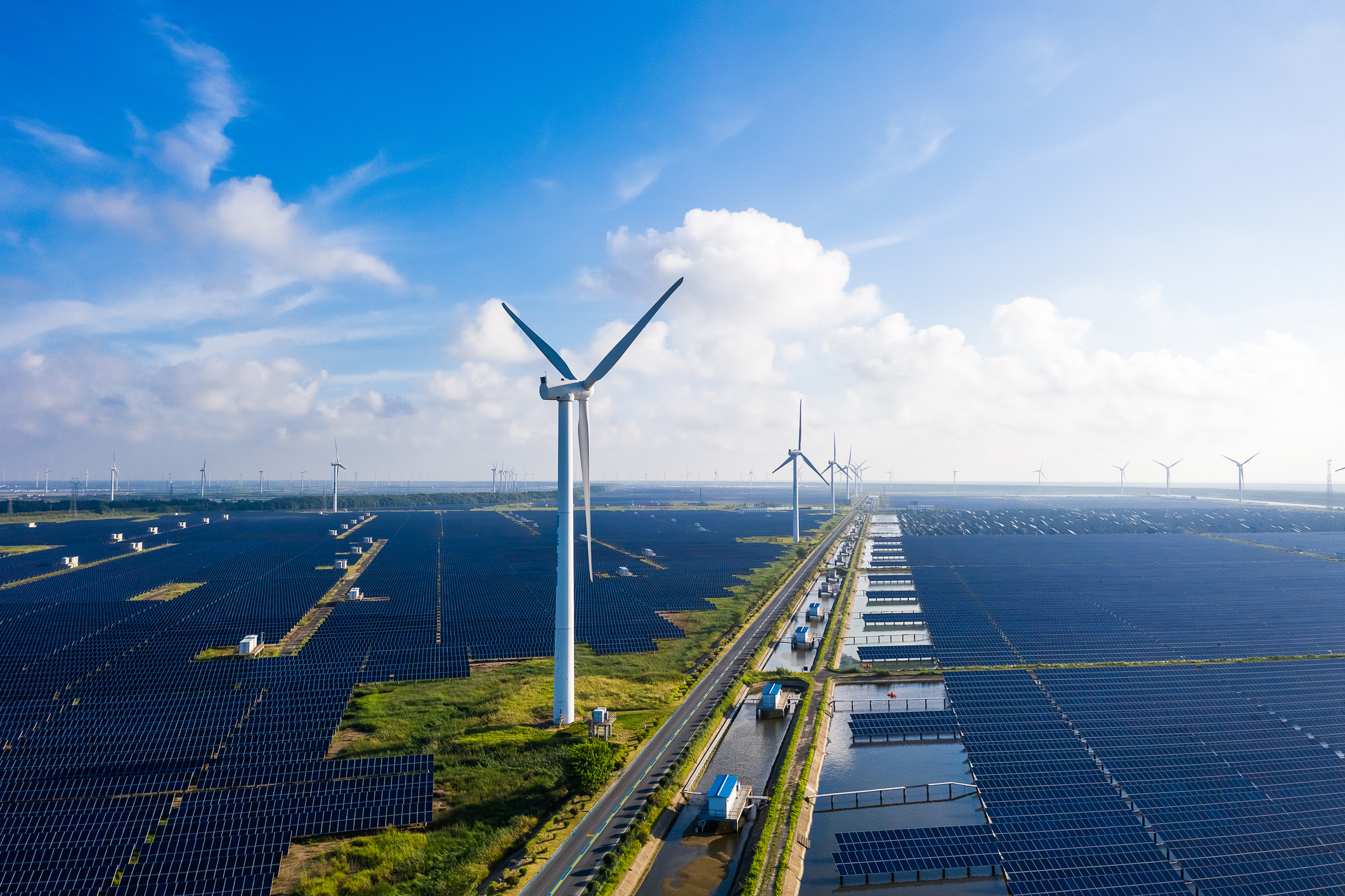Investing in the energy sector – is the reward worth the risks?
The energy sector used to offer predictable returns, but now you need to tread carefully. Is the risk worth it?


“It’s not a way to get real rich, but it’s a way to stay real rich,” Warren Buffett said in 2020 at the annual general meeting of his conglomerate Berkshire Hathaway. Buffett was talking about the utility and energy sector. In particular, he was referring to Berkshire’s division, Berkshire Hathaway Energy (BHE).
Berkshire entered the energy supply and distribution business in 1999 when it bought a controlling stake in MidAmerican Energy Company for $2billion. The group expanded rapidly, buying stakes in other operators in the US, Canada, the UK and Australia. Today, BHE operates across 28 US states, transports 15% of America’s natural gas and serves more than 13 million customers. The $2billion initial investment has grown into a giant with $138billion of assets.
However, ferocious headwinds have started building against the utility giant in recent years. These trends, which seem to have forced Buffett to reconsider his stance as an advocate of the industry, aren’t limited to North America, and BHE isn’t the only company struggling. Worldwide, the entire utility sector is grappling with what can only be described as a once-in-a-generation period of change that threatens to upend the once-reliable industry.
MoneyWeek
Subscribe to MoneyWeek today and get your first six magazine issues absolutely FREE

Sign up to Money Morning
Don't miss the latest investment and personal finances news, market analysis, plus money-saving tips with our free twice-daily newsletter
Don't miss the latest investment and personal finances news, market analysis, plus money-saving tips with our free twice-daily newsletter
Future of the energy sector
In Warren Buffett’s 2023 letter to the investors of Berkshire Hathaway, the billionaire cast doubt over the future of the group’s energy business, which he had praised only a few years previously. “Berkshire can sustain financial surprises, but we will not knowingly throw good money after bad,” he noted in his annual letter to shareholders in February, warning of the “spectre of zero-profitability or even bankruptcy” across the industry.
The root cause of this change of heart is climate change. PacifiCorp, the largest electric utility owned by Berkshire, has been found liable for a series of deadly wildfires in 2020. The company has been blamed for failing to shut off some of its power lines, which ignited vegetation that had been dried to a crisp by the hot weather. The scale of the potential liability isn’t yet clear, but analysts have suggested the bill could be as high as $45bn.
At the same time, BHE is spending tens of billions of dollars rebuilding its electricity network to cope with the surge in demand for green power and associated transition systems. Meanwhile, in 2019, Pacific Gas & Electric, California’s largest utility, filed for Chapter 11 bankruptcy protection after accumulating an estimated $30bn in liability for fires started by its poorly maintained equipment.
These twin issues perfectly illustrate the difficulties facing the global utility sector today. On the one hand, climate change is upending how companies have been doing business for years. And on the other, these companies are having to rebuild their networks to cope with the green transition. That means more electricity (copper wire, in other words), less coal, more solar and fewer big, horizon-dominating power plants.
The biggest problem facing the sector is that the new world order is going to look very different to the old one. Large power plants are becoming a thing of the past, to be replaced with tens of thousands of smaller solar or wind farms. These units are cheaper and easier to build, but they require the grid to be rewired.
The current electricity grid in most nations is based on the model of a few big power plants and their associated equipment. So there tend to be a few well-connected spots around each country. That’s no longer relevant. Where there was one plant, there are now ten dotted around each region, and each one needs new connections. The cost of this change will be astronomical. The UK’s National Grid has released a “£58bn plan” to rewire Great Britain’s electricity grid, and that’s just the start.
The water sector, too, is facing an uphill struggle in a changing world. In the UK, the situation is particularly dire as water companies, after years of under-investment, have attracted criticism from all sides for dumping raw sewage in rivers and the sea as ageing systems just can’t cope. Water companies have proposed a £100bn capital spending plan between 2025 and 2030 to tackle the problem. These numbers are huge, and the money’s going to have to come from somewhere. It is likely that investors will have to foot the bill.
This suggests that the once-dependable returns investors once received from utility companies are no longer on the cards. Investment returns are likely to fall, and in some cases, investors may even be asked to put up extra cash.
The trend is already taking shape. In 2020, SSE, one of the UK’s largest electricity suppliers and distributors, announced that it would cut its dividend to fund future growth after it sold its energy-supply business. Another cut followed earlier this year as part of the company’s reinvestment plans. The money that SSE is pouring into its network business should see its regulated asset base double from £8bn in 2022 to more than £16bn by 2027.
National Grid hasn’t cut its dividend (yet), but it recently announced a mammoth £7bn fundraising to help fund a £60bn investment plan in both its UK and US markets set to take place over the next five years, double the sum spent over the previous five. The company said the investment would help underpin a 10% compound annual growth rate in its asset base (compared to 14% for SSE) over the next five years.
Challenges faced by the global energy sector
Both SSE and National Grid are investing today to drive growth in the future, which is the trade-off these businesses and investors are going to have to make in the coming years. Returns are no longer assured, but long-term growth is on the cards for those willing to stick around.
That said, there will be some challenges along the way. These industries are heavily regulated, and the building and planning system in most countries is also heavily regulated. The UK’s planning system has drawn headlines for its complexity, but other countries have similar problems.
The world’s re-wiring has captured the attention of the media over the past few years, but there has been another global issue brewing below the surface: water security. The problems with Britain’s water providers have been well-publicised. Ageing infrastructure can’t cope with storm surges and a modern population.
In Spain, it’s a matter of not having enough water rather than too much of it. Parts of the country are suffering one of the worst droughts on record, and that’s before the summer has even started. Like electricity providers, water companies face a large bill to future-proof their networks. This will prove a headache for most businesses. Water is a highly regulated industry, and even where it’s not, the threat of government intervention is never far away. So, while the industry may look attractive, it shouldn’t be deemed risk-free.
There are now question marks hanging over the sustainability of the returns water companies have provided their investors for so long. After over a decade of sucking as much money as possible out of Thames Water, the company’s owners have marked down the value of the company’s equity, in some cases to zero. There is no money left for investors.
Thames’s problems are not an isolated case. According to the Financial Times, the 16 water monopolies in England and Wales paid out a total of £78bn in dividends in the 32 years between privatisation in 1991 to March 2023, while chalking up £64bn in net debt. Infrastructure spending over the period totalled £190bn.
When the companies were privatised, they had no debt. Ofwat, the sector’s regulator, wants companies to get a grip on their finances. It is pushing them to reduce gearing – a measure of the ratio of debt to assets – from a sector average of around 68% to 55% by April 2025.
That will require an equity injection of £5bn by 2030 and £8bn by 2035. Water UK, the industry’s trade body, said investors have pledged to inject £6.5bn in new equity as well as raising debt as part of a plan to invest £96bn by 2023. On top of this, costs will be passed onto billpayers. Companies have asked for bills to be hiked by as much as 70% by 2030 in some cases.
Wherever you look in the global utilities sector, costs are mounting, and regulators are clamping down. As Warren Buffett has discovered, these challenges are turning a once lucrative sector into a minefield. Utilities are no longer a way to “stay real rich”.
Growing opportunities in the energy sector
That’s not to say investors should avoid the sector altogether. It’s changing, not failing. Whereas investors might once have expected to buy utilities for their dividends and hold them indefinitely, relying on their steady, dependable income, now investors have to look past the income to long-term asset growth.
For example, National Grid has raised money from investors but now aims to grow its asset base at a double-digit annual rate. SSE has laid out similar targets. Assuming each company’s share price continues to trade in line with book value, investors should be able to pocket a double-digit annual capital return with some income thrown into the mix.
So far, countries representing 90% of the world’s GDP have committed to decarbonising the planet by 2050. That’s a huge commitment to long-duration investment programmes. The total bill for this is going to be several trillion dollars, and politicians and regulators can’t afford to penalise investments: the public sector alone can’t afford the bill.
As the team at Ecofin, which manages $1.9bn across private and public assets, including UK investment trust Ecofin Global Utilities and Infrastructure, told me, the “structural growth opportunities inherent in the energy transition” have only enhanced the attractiveness of infrastructure as an investment. Ecofin argues that the policy environment is becoming “increasingly supportive” of utilities’ rising to the challenge.
And the qualities that have historically driven returns haven’t disappeared. The sector has always had high barriers to entry; I’d argue that these barriers have never been higher. The UK hasn’t built a new reservoir in three decades. There are now a handful in the pipeline, but it is expected to be decades before they’re in use due to planning and construction hurdles. Major UK renewable-energy projects are being delayed by more than ten years as the grid reaches capacity and new networks are bogged down in planning and construction bottlenecks.
The same is true in the US and other developed nations. In Germany, it can take ten years for a project to get from the design to the commissioning stage, while in the US, it has taken one of BHE’s flagship projects 30 years of planning and construction to get anywhere near completion. It’s not easy to build energy infrastructure anywhere in the world, and that has only solidified the sector’s competitive advantage and monopolistic traits. That’s without touching on the vast sums of money that would be required to build a competitor to a company such as Thames Water.
The best investments in the sector are likely to be the firms adapting to the changes and meeting regulatory issues head-on. This won’t come cheap, but as EcoFin notes, these businesses “are expected to be major beneficiaries of structural growth and attractive returns on significant capital investments”. However, “there will be winners and losers along the way”. Base investment decisions on “detailed fundamental analysis” and incorporate diversification – at the stock, sector and global levels.
As EcoFin points out, companies and countries are moving at different paces and adopting varying strategies. In Europe, 80% of the largest European utilities’ earnings before interest, tax, deprecation and amortisation (Ebitda) is fully contracted and inflation-linked, thereby “de-risking these businesses”. That’s less common in the US, which is also less advanced when it comes to the energy transition.
Ten energy stocks to consider now
I’ve tried to make it clear throughout this article that utilities no longer offer a free lunch, and investors have to be careful where they invest. Despite the potential opportunities, the risks are growing, which investors need to keep in mind when looking for ways to play the energy transition. A plethora of London-listed investment trusts offer exposure to companies with a part to play in the energy transition.
As William Heathcoat Amory, managing partner at investment service Kepler Partners, notes, trusts can be a better way to invest in the sector as they’re “cash flow-based, meaning that a high proportion of returns are seen as income paid every year, rather than a growth investment which is a lump sum that may or may not be returned at the end”.
Trusts also have a “simpler, purer exposure” as they do not have to grapple with the “complexity of employing people” and tend to have limited development and construction risks. Amory cites the example of The Renewables Infrastructure Group (LSE: TRIG), which recently bought a battery developer to access this market. Renewables Infrastructure is the second-largest renewable-energy infrastructure trust listed in London, second only to Greencoat UK Wind (LSE: UKW). Its portfolio ranges from offshore wind in Germany and onshore wind in Sweden to solar power in France and battery-storage assets in England.
According to the Association of Investment Companies, the trust trades at a 21.7% discount on the value of its assets and offers a dividend yield of 7.5%. Compared with Greencoat, which focuses purely on wind, Renewables Infrastructure’s diversification across sectors is highly attractive. Its peers, Greencoat Renewables (LSE: GRP) and the Octopus Renewables Infrastructure Trust (LSE: ORIT), offer a similar investment portfolio, and both are trading at discounts to net asset value (NAV) of between 20% and 30%.
The Ecofin Global Utilities and Infrastructure Trust (LSE: EGL) doesn’t own assets in the same way. Instead, it owns a global portfolio of infrastructure stocks – a more diverse way to play the global energy transition. It has a big weighting in the UK-listed National Grid and SEE, both of which it believes are “very attractive” at recent levels, considering their capital investment and growth plans for the next decade and current valuation.
Only 10% of the portfolio is invested in the UK. Just over 22% is invested in US firms such as NextEra Energy (NYSE: NEE), the world’s largest generator of renewable energy from the wind and sun as well as a leader in battery storage.
The Imapx Listed Infrastructure Fund offers more sector diversification. Three of its top-ten holdings are water utilities, including United Utilities (LSE: UU) and Severn Trent (LSE: SVT). Roughly 44% of its assets are in North America, 42% in Europe, and the rest in Asia.
United Utilities and Severn Trent, along with their peer Pennon (LSE: PNN), are interesting plays. The water sector in the UK has faced a lot of flak, and this does not look set to go away anytime soon. But these companies are likely to maintain their monopolistic traits, and all now look appealing with dividend yields of between 5% and 7%. But I’d only recommend buying them as part of a basket of utilities rather than individual picks to reduce risk.
The iShares Global Clean Energy UCITS ETF (LSE: INRG) is an excellent passive option for investors looking for exposure to a portfolio of clean-energy companies at the forefront of the energy transition.
For a US focus, investors could pick another exchange-traded fund (ETF), the iShares S&P 500 Utilities Sector UCITS ETF (LSE: IUSU), which offers exposure to the top utility players in the S&P 500, an excellent way to invest in the energy transition across the pond. For a global infrastructure play, there’s the iShares Global Infrastructure ETF (LSE: INFR), which holds the likes of NextEra Energy, but also key infrastructure providers such as Union Pacific.
This article was first published in MoneyWeek's magazine. Enjoy exclusive early access to news, opinion and analysis from our team of financial experts with a MoneyWeek subscription.
Get the latest financial news, insights and expert analysis from our award-winning MoneyWeek team, to help you understand what really matters when it comes to your finances.

Rupert is the former deputy digital editor of MoneyWeek. He's an active investor and has always been fascinated by the world of business and investing. His style has been heavily influenced by US investors Warren Buffett and Philip Carret. He is always looking for high-quality growth opportunities trading at a reasonable price, preferring cash generative businesses with strong balance sheets over blue-sky growth stocks.
Rupert has written for many UK and international publications including the Motley Fool, Gurufocus and ValueWalk, aimed at a range of readers; from the first timers to experienced high-net-worth individuals. Rupert has also founded and managed several businesses, including the New York-based hedge fund newsletter, Hidden Value Stocks. He has written over 20 ebooks and appeared as an expert commentator on the BBC World Service.
-
 Goodwin: A superlative British manufacturer to buy now
Goodwin: A superlative British manufacturer to buy nowVeteran engineering group Goodwin has created a new profit engine. But following its tremendous run, can investors still afford the shares?
-
 Is US stock market exceptionalism over?
Is US stock market exceptionalism over?US stocks trailed the rest of the world in 2025. Is this a sign that a long-overdue shift is underway?
-
 Goodwin: A superlative British manufacturer to buy now
Goodwin: A superlative British manufacturer to buy nowVeteran engineering group Goodwin has created a new profit engine. But following its tremendous run, can investors still afford the shares?
-
 A change in leadership: Is US stock market exceptionalism over?
A change in leadership: Is US stock market exceptionalism over?US stocks trailed the rest of the world in 2025. Is this a sign that a long-overdue shift is underway?
-
 A reckoning is coming for unnecessary investment trusts
A reckoning is coming for unnecessary investment trustsInvestment trusts that don’t use their structural advantages will find it increasingly hard to survive, says Rupert Hargreaves
-
 Metals and AI power emerging markets
Metals and AI power emerging marketsThis year’s big emerging market winners have tended to offer exposure to one of 2025’s two winning trends – AI-focused tech and the global metals rally
-
 8 of the best houses for sale with beautiful fireplaces
8 of the best houses for sale with beautiful fireplacesThe best houses for sale with beautiful fireplaces – from a 15th-century cottage in Kent to a 17th-century palazzo in Oxfordshire
-
 King Copper’s reign will continue – here's why
King Copper’s reign will continue – here's whyFor all the talk of copper shortage, the metal is actually in surplus globally this year and should be next year, too
-
 Luana Lopes Lara: The ballerina who made a billion from prediction markets
Luana Lopes Lara: The ballerina who made a billion from prediction marketsLuana Lopes Lara trained at the Bolshoi, but hung up her ballet shoes when she had the idea of setting up a business in the prediction markets. That paid off
-
 British blue chips offer investors reliable income and growth
British blue chips offer investors reliable income and growthOpinion Ben Russon, portfolio manager and co-head UK equities, ClearBridge Investments, highlights three British blue chips where he'd put his money